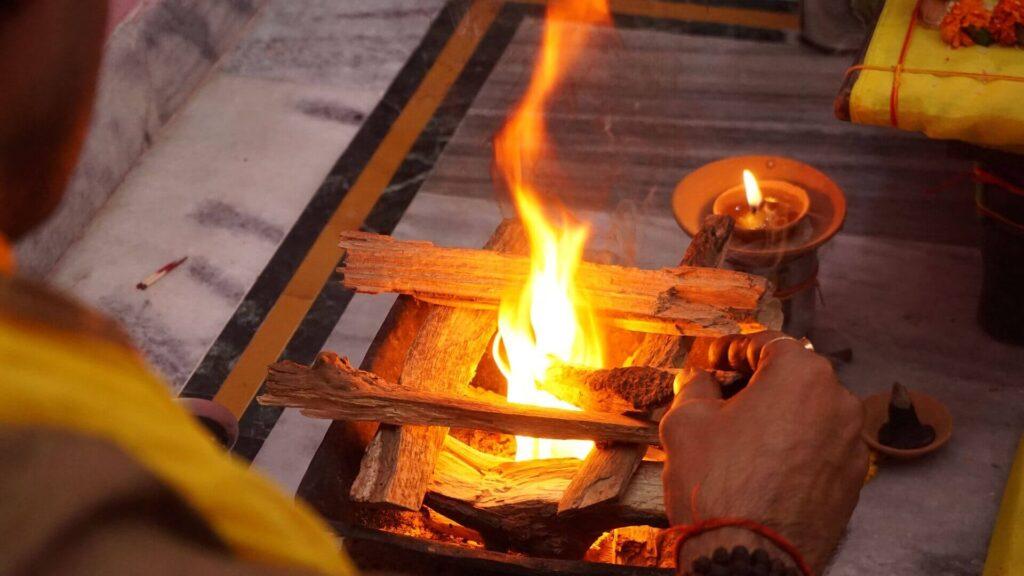Incense and Devotion: How Fragrance Elevates Hindu Prayer Experiences
Introduction
In the intricate tapestry of Hindu rituals, where every gesture and element holds spiritual significance, incense takes center stage. Beyond its aesthetic appeal, the aroma of incense carries a profound meaning that enhances the devotion and prayer experiences of worshippers. This article delves into the entwined relationship between incense and devotion, exploring how the fragrant embrace of incense elevates the act of prayer in Hinduism.
Historical and Cultural Significance of Incense in Hinduism
The use of incense in Hindu rituals stretches back in time, woven into the fabric of ancient traditions. From the Rigveda to the Upanishads, references to incense abound, solidifying its cultural importance. It has been an integral part of ceremonies, pujas, and sacred gatherings. The historical lineage of incense underscores its role in creating a connection between the earthly and the divine, making it more than just an accessory in worship.
The Multisensory Experience
Hindu worship is a multisensory journey, engaging the senses in a harmonious dance of devotion. The fragrance of incense, however, holds a unique position in this sensory symphony. It’s said that scent is closely linked to memory and emotions, and as worshippers breathe in the fragrant waves, it stirs profound sentiments and memories. The aroma of incense, intertwined with the visual aesthetics of the place of worship, creates an immersive experience that resonates deeply within the soul.
Symbolism and Spiritual Significance of Fragrance
In the world of incense, every fragrance is a symbol, every scent a story. Sandalwood signifies purity and spirituality, jasmine embodies divine love, and frankincense brings forth a sense of sacredness. The choice of incense fragrance aligns with the intention of the worshipper and the energy they wish to invoke. Each whiff becomes a conduit for prayers, offering a tangible link between the material and the spiritual.
Creating Sacred Spaces with Fragrance
The act of lighting incense is not just about illumination; it’s a symbolic gesture that transforms the surroundings into a sacred space. As the tip of the incense stick burns and releases its aromatic tendrils, it creates an atmosphere of reverence and sanctity. The aromatic embrace marks a transition from the mundane to the sacred, reminding the worshippers of the divine presence surrounding them.
Purification and Cleansing
Incense has been recognized for its cleansing properties, both on a spiritual and a psychological level. The rising smoke of incense is believed to purify the environment, purging it of negative energies. As worshippers light incense, they engage in a ritual of purification, shedding away distractions and negativity, allowing them to approach their prayers with a focused and purified mind.
The Journey of Rising Smoke
The visual spectacle of incense smoke rising, like ethereal tendrils reaching towards the heavens, carries a symbolism of its own. The ascent of the smoke symbolizes the ascent of prayers, carrying the hopes, dreams, and devotion of the worshipper to the divine realms. The spiraling patterns and graceful dance of the smoke embody the very essence of prayer – a connection between the earthly and the divine.
Psychological Impact and Focused Devotion
The sensory engagement with incense has a psychological impact that enhances the state of devotion. The fragrance of incense aids in calming the mind, reducing stress, and creating a conducive environment for focused prayer. As the aroma envelops the senses, it anchors the worshippers in the present moment, allowing them to transcend worldly distractions and immerse themselves fully in their devotional practice.
Cultural Diversity in Incense Usage
The practice of using incense varies across different Hindu traditions, sects, and regions. Each culture brings its own unique blend of fragrances, invoking regional deities and energies. Additionally, the global influence of Hindu practices has led to the incorporation of incense into meditation, relaxation, and holistic healing practices worldwide. Incense has become a universal symbol of spirituality that transcends cultural boundaries.
Modern Relevance and Wellness Benefits
In the age of technological advancements, the practice of using incense remains deeply relevant. Incense has found its way into contemporary Hindu practices, offering a bridge between ancient wisdom and modern living. Beyond its spiritual significance, the aroma of incense contributes to overall wellness. The soothing properties of incense smoke have been harnessed in aromatherapy, offering relaxation, stress relief, and mental clarity.
Here are some common types of incense fragrances available in our Hindu culture:
- Sandalwood (Chandan):
- Symbolism: Purity, tranquility, humility, and spiritual awakening.
- Significance: Sandalwood is considered one of the most sacred fragrances in Hinduism. Its soothing aroma is believed to purify the mind, inviting divine energies and fostering a sense of peace.
- Jasmine (Mogra):
- Symbolism: Love, devotion, sensuality, and spiritual purity.
- Significance: Jasmine is often associated with Lord Krishna and Goddess Radha. Its sweet fragrance represents the adoration of deities and signifies the seeker’s yearning for spiritual union.
- Rose (Gulab):
- Symbolism: Devotion, love, compassion, and divine femininity.
- Significance: The aroma of roses is considered an offering to the gods and goddesses. It embodies the essence of devotion and expresses deep reverence for the divine.
- Lavender:
- Symbolism: Calmness, relaxation, balance, and purification.
- Significance: Lavender’s soothing scent is often used during meditation and relaxation practices. It helps create an atmosphere of tranquility and inner peace.
- Nag Champa:
- Symbolism: Spiritual growth, meditation, and connection with the divine.
- Significance: Nag Champa is a blend of fragrances, typically containing frangipani and sandalwood. It’s associated with spiritual practices, enhancing meditation and creating a sacred environment.
- Musk (Kasturi):
- Symbolism: Divine energy, sensuality, and attraction.
- Significance: Musk’s rich and earthy aroma is believed to attract positive energies and stimulate sensuality. It’s often used to enhance the atmosphere during rituals.
- Frankincense (Dhoop):
- Symbolism: Spirituality, purification, protection, and transcendence.
- Significance: Frankincense has been used in religious rituals for centuries. Its fragrant smoke is believed to carry prayers to the heavens and cleanse the surroundings.
- Patchouli:
- Symbolism: Grounding, prosperity, and connection with nature.
- Significance: Patchouli’s musky and earthy scent is associated with grounding energies. It’s believed to help align the mind and body with the Earth’s energy.
- Cinnamon (Dalchini):
- Symbolism: Prosperity, warmth, energy, and protection.
- Significance: Cinnamon’s invigorating fragrance is often used to create a lively atmosphere during festivals and celebrations. It’s believed to attract positive energies and good fortune.
- Lily:
- Symbolism: Renewal, purity, and transformation.
- Significance: Lily’s sweet and fresh aroma is often used to create a sense of renewal and purity. It’s associated with new beginnings and transformational experiences.
- Lotus:
- Symbolism: Enlightenment, rebirth, purity, and spiritual growth.
- Significance: The lotus flower holds immense symbolism in Hinduism. Its fragrance is believed to inspire spiritual growth and align the practitioner with higher consciousness.
Conclusion
As we conclude this aromatic journey into the realm of incense and devotion, it’s evident that fragrance holds the power to elevate the act of prayer in Hinduism. Beyond its sensory appeal, incense bridges the gap between the physical and the spiritual, infusing each prayer with meaning, intention, and emotion. It’s a testament to the intricate web of symbolism, culture, and spirituality that defines Hindu worship. So, the next time you light an incense stick, remember that its fragrance carries your prayers, your devotion, and your connection to the divine.
Elevate Your Senses with Durgamaga’s Exquisite Incense Sticks! 🪔 Immerse yourself in a world of captivating fragrances and profound symbolism with our premium collection of incense sticks. At Durgamaga.com, we blend tradition with innovation to offer you an extraordinary selection that speaks to your soul. Our incense sticks are meticulously crafted to transport you to a realm of serenity, where each aroma carries a unique message – from the purity of sandalwood to the divine allure of jasmine. Whether you seek relaxation, spiritual connection, or simply a sensory journey, our incense sticks cater to every aspiration. Experience the power of fragrances that uplift your space, enhance your rituals, and elevate your well-being. Visit Durgamaga.com and transform your surroundings into a sanctuary of scents and spirituality. 🔮🛍️ #DurgamagaIncense #ElevateYourSenses #ScentedSanctuary
Our Exclusive Range of Incense Sticks







Shop Online







